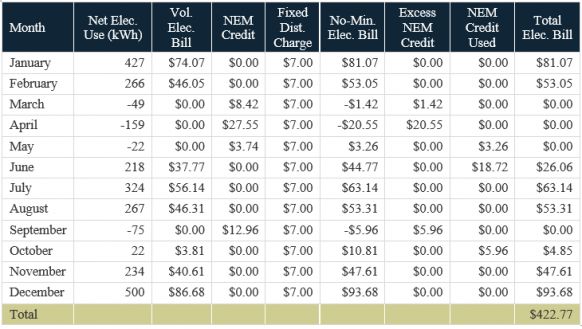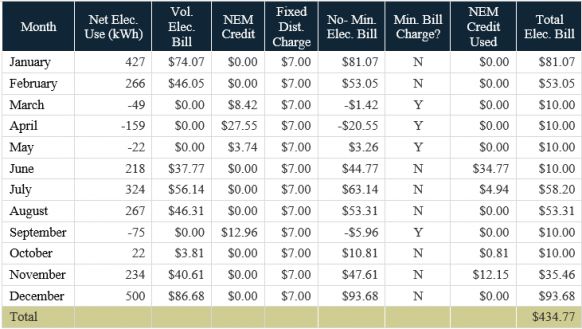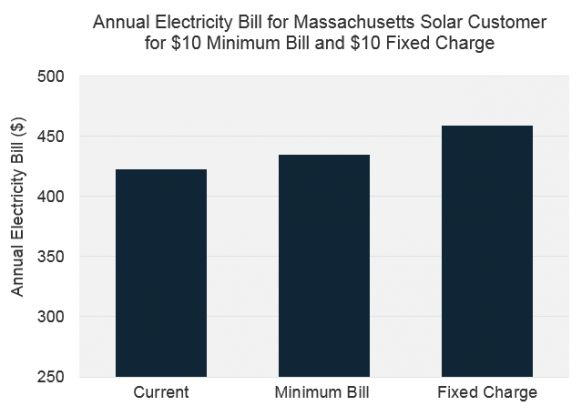Earlier this month in a new report, The Minimum Bill as a Net Metering Solution, GTM Research explored the potential impact of the proposed Massachusetts minimum bill. One of our key findings from the report is that a minimum bill is preferable to a fixed charge for the typical Massachusetts solar customer, assuming the minimum bill is set at the same level as the fixed charge.
In this report excerpt, we further illuminate the impact by comparing a typical Massachusetts solar customer’s annual bill to a bill with a minimum charge of less than $10.
In order to determine the impact of the minimum bill mechanism on a typical Massachusetts solar customer over the course of a calendar year, GTM Research analyzed the impact of a $10 minimum bill on an NStar customer with a 6.3-kilowatt rooftop solar system who has an energy consumption and production profile based on actual data from Genability. We assumed a volumetric retail electricity rate of 17.33 cents per kilowatt-hour and a fixed distribution charge of $7 per month.
Under the current billing mechanism the solar customer would pay $422.77 for the year.

Source: GTM Research and Genability
Under the $10 monthly minimum bill mechanism, the solar customer would pay $434.77 for the year.

A $10 minimum bill would result in the typical Massachusetts solar customer paying an additional $12 more each year. The customer would pay an additional $3 for each of the four months (March, April, May and September) that the minimum bill charge is activated.
While a $12 increase to the typical Massachusetts solar customer’s annual electricity bill may be tough for solar customers and industry participants to swallow, it is undoubtedly preferable to a $10 fixed charge.

Source: GTM Research
***
The report, available to GTM Research solar clients, also includes a comprehensive overview of how the proposed Massachusetts minimum bill mechanism would work. It analyzes the impact of the minimum bill on a typical Massachusetts solar customer’s electricity bill, the minimum bill’s effect on residential solar project economics, and the impact of a number of various minimum-bill charges.
If you have any questions or would like to gain access to the report, please contact [email protected].



